गेहूं की जल्दी बुवाई: जलवायु परिवर्तन में एक सार्थक प्रयास
Early (October) sowing of wheat is defined as sowing from the third week of October to the first week of November. Farmers in northwestern and central India advance their wheat much earlier (October) than usual (November) to protect their wheat from eventual heat stress and maintain production by using soil moisture even after the paddy harvest.
Wheat is an important crop in South Asia and India. Women from marginal and small agricultural households who contribute significantly to the wheat production system and animal management should be given special attention. The Gangetic plains of South Asia are currently considered ideal for wheat growing, but climate change could reduce productivity by 2050.
Additionally, if the rate of depletion of the groundwater table continues at its current pace, it could have a significant impact on farmers. Wheat is one of the major crops that has the least heat tolerance. According to a study, for every 1 degree Celsius increase in temperature in Northwest India and Pakistan, wheat yield can be reduced by 3 to 17 percent.
Although the 10 million hectare rice-wheat system in South Asia often has enough moisture to sow wheat, it begins to deplete from mid-November. Furthermore, by the end of January, the water table in central India has historically been so low that pumping is either impractical or excessively expensive.
Farmers can save an irrigation by using the remaining moisture during early sowing, which increases water productivity—especially when used in conjunction with other farming techniques.
The variety developed so far is generally for timely sowing. Scientists have developed new varieties for advance sowing, which farmers can grow and get more production. New varieties are tolerant of the warm temperatures of early and late season.
A new study has demonstrated that early heat tolerance wheat lines can be developed if different breeding lines are selected under October sowing. The study's findings are expected to help introduce wheat producers and consumers to a new type of wheat germplasm that can thrive when planted early.
Pumping less water will further improve the sustainability of wheat production. Thanks to tools like Happy Seeder, Super Seeder and Super Straw Management System, early planting is possible immediately after harvesting. This has added benefit of reducing straw burning and the resulting greenhouse gas emissions.
In the past there was no opportunity of planting immediately after the paddy harvest which mostly happens in the month of October as suitable cultivars for early sowing were not easily available.
It is therefore anticipated that the availability of wheat varieties with early heat tolerance will benefit farmers as a whole and environmental sustainability. The best performing genotypes for early sowing can be employed in a systematic crossing program to increase breeding for early heat tolerance.
Wheat Varieties for Advance Sowing:
DBW 187:
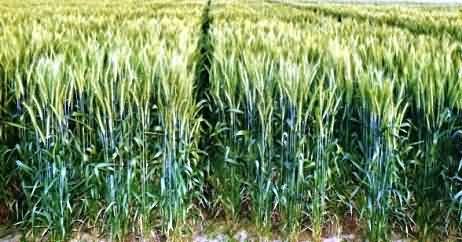 The wheat variety DBW 187, developed by the Indian Institute of Wheat and Barley Research, Karnal, has been notified for early and early sowing conditions in the irrigated areas of North-West plains and Central region of the country.
The wheat variety DBW 187, developed by the Indian Institute of Wheat and Barley Research, Karnal, has been notified for early and early sowing conditions in the irrigated areas of North-West plains and Central region of the country.
It consists mainly of Punjab, Haryana, Delhi, Rajasthan (except Kota and Udaipur divisions), western Uttar Pradesh, Jammu and Kashmir (Jammu and Kathua districts), Himachal Pradesh (Una district and Paonta valley), parts of Uttarakhand (terai region), Madhya Pradesh, Chhattisgarh, Gujarat. , Kota and Udaipur Divisions of Rajasthan, have been included.
WH 1270:
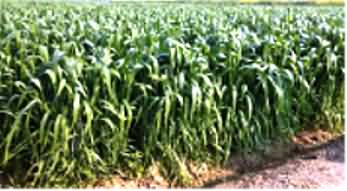 WH 1270, a wheat variety developed by Chaudhary Charan Singh Agricultural University, Hisar, has been recommended for early sown cultivation in irrigated condition of North Western plains of India.
WH 1270, a wheat variety developed by Chaudhary Charan Singh Agricultural University, Hisar, has been recommended for early sown cultivation in irrigated condition of North Western plains of India.
The Central Sub-Committee for Release and Notification of Varieties vide SO 500(E) dated 29.01.2021 has designated this variety for Punjab Haryana Delhi Rajasthan (Except Kota and Udaipur Divisions) and Western Uttar Pradesh (Except Jhansi Division) Jammu -Kashmir (Jammu and Kathua districts) Himachal Pradesh (Una district and Paonta Valley) Uttarakhand (Terai region) have been notified.
DBW 303:
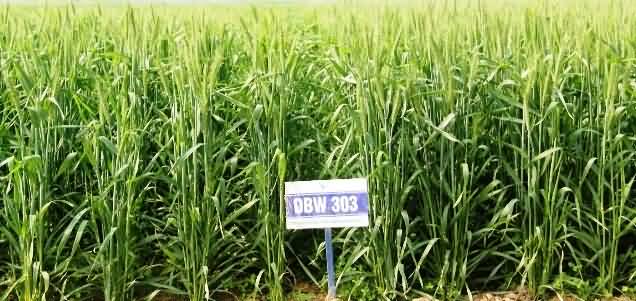 Wheat variety DBW 303 developed by ICAR-Indian Institute of Wheat and Barley Research Karnal has been notified for early and early sowing conditions in irrigated areas of North Western plains and Central region of India.
Wheat variety DBW 303 developed by ICAR-Indian Institute of Wheat and Barley Research Karnal has been notified for early and early sowing conditions in irrigated areas of North Western plains and Central region of India.
It consists mainly of Punjab, Haryana, Delhi, Rajasthan (except Kota and Udaipur divisions), western Uttar Pradesh, Jammu and Kashmir (Jammu and Kathua districts), Himachal Pradesh (Una district and Paonta valley), parts of Uttarakhand (terai region), Madhya Pradesh, Chhattisgarh, Gujarat. , Kota and Udaipur Divisions of Rajasthan, have been included.
DBW 327:
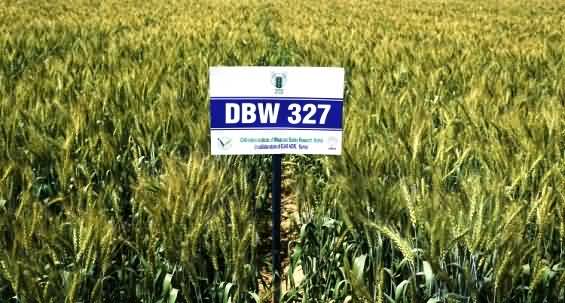 The wheat variety Karan Shivani (DBW327) developed by the Indian Institute of Wheat and Barley Research, Karnal, has been recommended for early sowing cultivation in irrigated condition of North Western plains of India.
The wheat variety Karan Shivani (DBW327) developed by the Indian Institute of Wheat and Barley Research, Karnal, has been recommended for early sowing cultivation in irrigated condition of North Western plains of India.
The Central Sub-Committee for Release and Notification of Varieties vide SO 8(E) dated 24 December 2021 has designated this variety as Punjab, Haryana, Delhi, Rajasthan (except Kota and Udaipur Divisions) and Western Uttar Pradesh (Except Jhansi Divisions) Jammu -Kashmir (Jammu and Kathua Districts) Himachal Pradesh (Una District and Paonta Valley) Uttarakhand (Terai Region) have been notified.
DBW 332:
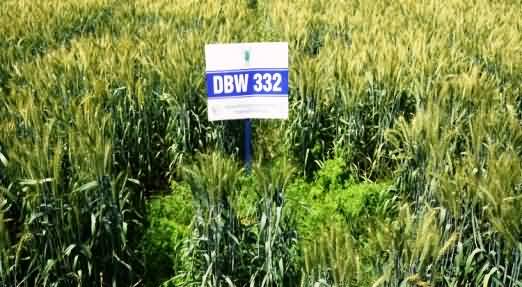 The wheat variety Karan Aditya (DBW332) developed by the Indian Institute of Wheat and Barley Research, Karnal, has been recommended for early sowing cultivation in irrigated condition of North Western plains of India.
The wheat variety Karan Aditya (DBW332) developed by the Indian Institute of Wheat and Barley Research, Karnal, has been recommended for early sowing cultivation in irrigated condition of North Western plains of India.
The Central Sub-Committee for Release and Notification of Varieties vide SO 8(E) dated 24 December 2021 has designated this variety for Punjab, Haryana, Delhi, Rajasthan (except Kota and Udaipur Divisions) and Western Uttar Pradesh (Except Jhansi Divisions) Jammu -Kashmir (Jammu and Kathua Districts) Himachal Pradesh (Una District and Paonta Valley) Uttarakhand (Terai Region) have been notified.
Features of different varieties:
|
Sr. No. |
Feature |
DBW 187 i ii |
DBW 303 i ii |
WH 1270 |
DBW 327 |
DBW 332 |
|
1 |
Days to flowering (days) |
103 71 |
101 69 |
100 |
98 |
101 |
|
2 |
Days to maturity (days) |
158 124 |
156 123 |
156 |
155 |
156 |
|
3 |
Plant height (cm) |
100 87 |
101 86 |
100 |
98 |
97 |
|
4 |
1000 Grain weight (gm) |
47 47 |
42 41 |
46 |
48 |
46 |
|
5 |
Average yield |
75.2 60.3 |
81.2 58.3 |
65.85 |
79.4 |
78.3 |
- North Western Plain Zone – Punjab, Haryana, Delhi, Rajasthan (Except Kota and Udaipur Divisions), Western Uttar Pradesh (Except Jhansi Division), Jammu & Kashmir (Jammu and Kathua Districts), Himachal Pradesh (Una District and Paonta Valley) and Uttarakhand (Tarai Region)
- Central Zone – Madhya Pradesh, Chhattisgarh, Gujarat, Kota and Udaipur Divisions of Rajasthan, Jhansi Division of Uttar Pradesh)
Package of practices:
Selection of field and land preparation:
Flat fertile soil, pre-sowing irrigation followed by ploughing with disc harrow, tiller and leveler at field capacity for optimum field conditions.
Seed treatment:
Vitavax (Carboxin 37.5% + Thiram 37.5%) @ 2-3gm/kg seed.
Sowing time:
20 Oct. – 5 Nov.
Seed rate/ sowing method:
100 Kg/ha. Line sowing with spacing of 20 cm between the rows.
Fertilizer dose:
- Best performance can be achieved under 225:90:60 Kg/ha N:P:K. + FYM @ 15 tone/ha.
- For high fertility soils in NWPZ 150:60:40 (N:P:K) Kg/ha.
Growth regulators:
Chlormequat chloride (Lihocin) @ 0.2%+ tebuconazole (Folicur 430 SC) @ 0.1% of commercial product dose (Tank mix application) at First Node and Flag leaf the genotypes response was highest.
Weed Control:
- For the control of broadleaved weeds 2,4-D @500g/ha or metasulfron @4g/ha or carfentranzone @ 20g/ha can be sprayed using about 250 litres of water/ha.
- For the control of grasses isoprutron @1000g/clodinafop @60g/fenoxaprop @ 100g/sulfosulfron @25g/ha should be used. In isoproturon resistant P. minor infested areas clodinafop or fenoxaprop or sulfosulfuron can be used.
- For the control of complex weed flora combination of isopruturon with 2,4-D/metsulfuron or sulfosulfuron with metsulfuron can be applied at 30-35 DAS at sufficient soil moisture.
Pest and Disease control :
Varieties are resistant to stripe, leaf and stem rust and other diseases. However, for the control of rusts, Karnal bunt and powdery mildew, apply propiconazole/ triademefone/ tebucanazole @ 0.1% (1ml/litre) as foliar spray twice after disease appearance at 15 days interval.
Irrigation:
4-6 irrigations. First at 20-25 DAS and thereafter at 20 days interval.
Harvesting:
Harvest and thresh as soon as fully ripe. The grain should be thoroughly dried before storage.
Authors:
Chandra Nath Mishra*, Disha Kamboj, Amit Sharma, Satish Kumar, Hanif Khan, and Gyanendra Pratap Singh
ICAR - Indian Institute of Wheat and Barley Research Karnal
Email:
